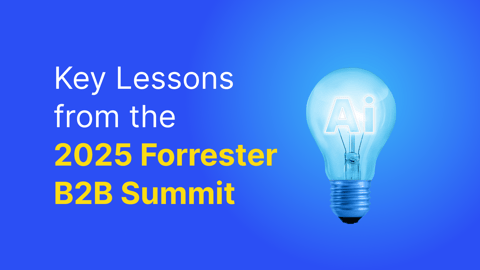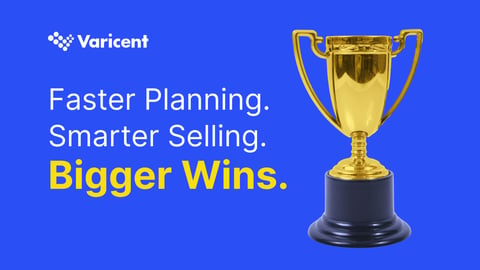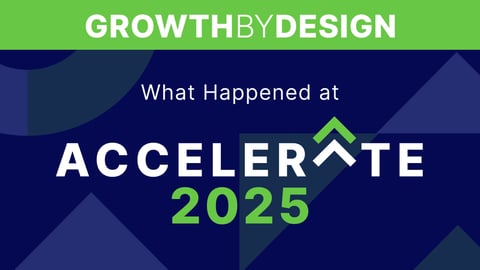This is part of a series of interviews with B2B revenue leaders. This interview is with Tim Hughes, CEO & Co Founder of DLA ignite.
 You are the Co-Founder and CEO of Digital Leadership Associates. Tell me a little bit about the company and the role that you play there.
You are the Co-Founder and CEO of Digital Leadership Associates. Tell me a little bit about the company and the role that you play there.
Adam Gray (my co-founder and I) have set up Digital Leadership Associates to change the world. We believe that the single most transformational technology of this century is social media. Everybody is on social media, your prospects, your customers are all there.
The problem with social is that it is currently siloed. It sits in Marketing, which is part of digital marketing. Or it sits siloed in customer service. Whereas social is actually the hub that now powers all departments within a company.
Digital Leadership Associates does 3 things:
-
Most companies C-Suites don’t understand the strategic imperative, incremental revenue, and competitive advantage they can get by transforming the whole business (Sales, Marketing, Supply Chain, Procurement, HR etc) to social. Social for them is all about cat photos. We run programs that help the C-Suite to understand social media, create a mission statement and build a transformation program. The second thing we do is drop down to department level.
-
Our departmental programs for sales, marketing, procurement etc, enable a business to embrace social media company-wide. Our social selling program is our poster child as I’m the one (according to Onalytica) most influential person in the world for social selling. My book “social Selling - Techniques to Influence Buyers and Changemakers” available on Amazon is a best seller.
-
We run the above for people as a managed service.
We have extensive experience of working in and on large corporate organizations and have a number of Tier 1 clients. So not only do we truly understand the challenges of corporate inertia, we also understand how to navigate within the political environment of large organizations.
We are at the cutting edge. We do not recycle others’ ideas, we develop a hypothesis, test it and then refine it based on real-world experiences. We invariably exceed our clients’ expectations of success because simply copying what other organizations do will not give our clients a competitive advantage.
Our programmes are NOT based on telling organizations what the problem or the opportunity is, but based on showing them how to grasp the opportunity and then empowering the people.
What's the 30-second pitch that you can give on your book to convince people to pick it up and give it a read?
It's a practical book on how to social sell. I co-wrote it with Matt Reynolds. We were seeing a lot of people talking about, "why you need to be social selling."
We'd go, we all know we need to do this but "Okay. How?" - Social Selling - Techniques to Influence Buyers and Changemakers is written has a “how” a “workbook” that gives you the sales guy a plan on what you need to do to meet buyer dysfunction. It’s designed to be highly practical.
The morning of the first brainstorming session where we wrote the first chapter, I was sitting in front of a sales leader, and he leaned across the desk and pointed a finger at me and said, "This social selling, Tim, is all very well, but where are the @£$%^&* leads?" We use that as a mantra all the way through the book. If the book got to “fluffy” we made sure we wrote in a practical session for the salespeople. I am after all a sales guy and I write for salespeople.
That leads us to the topic of the day, which is around social selling. When it's done right, it's so effective, but it's one of those things that is tough to get right. Where do you see people going wrong with their social selling strategy?
People think that social selling means that you have to sell over social. It’s not that. If we look at the mindsets of today's buyer, we don't want to be sold to. Most people will agree with me about that—but then they go back to their desks to work for their particular company and the mindset completely changes. They think it’s about putting out more content around how brilliant they are, and then immediately start pitching. It just doesn't work.
I've finished Gary V's book, Jab, Jab, Jab, Right Hook. He was saying that everyone is expecting someone to pitch something, and so if you're expecting a pitch or a right hook, you duck. The whole point of using social is you can build up relationships and you sell more effectively. So the jab, jab ….. Before you do the right hook and pitch.
Realise that might sound fluffy, so here is something a sales guy can get. If you have a personal brand online, you can go higher, faster with social than you can with cold calling. I can get any individual higher up within an organization using social than people can using legacy techniques.
We make no outbound (cold calling, cold email or advertising) in our organization at all. Social, when it's done well, it's a beautiful thing.
With all these new social channels coming in, what are your thoughts on SnapChat and Instagram compared to the more traditional social selling mediums like Twitter and LinkedIn. Where are their place is in social selling?
There's a saying is that you need to fish where the fish are. If you're in B2B sales, you need to be on Facebook, Twitter, Instagram, and LinkedIn.
- LinkedIn is the place to be from the B2B professional perspective. You need to have a buyer-centric profile, which is non-salesy. People are looking for an expert. They're looking for someone who's going to help them buy. If you smell like a salesperson at all, they will avoid you.
- If you're selling into anyone factual, like IT or finance, then you need to be on Twitter, because those people tend to be there. With LinkedIn, you're making connections or you're making friendships like you do on Facebook. With Twitter, it's slightly different, because what you're ultimately following is people. It's a great way of having quick, flurrying conversations.
- If you're in B2B enterprise sales, and you’re looking for particular individuals, what their likes are, what interests them, then Instagram is the place to be. Seeing and checking out your customers and prospects on social is no different than building a rapport offline. How do I mean? When you walk into somebodies office, and you see photos on the wall, you use this as a way to build rapport, you can do this with Instagram.
- SnapChat is an interesting one. It's a broadcast mechanism. If you think about LinkedIn, Facebook, Instagram, and Twitter, they're very much social networks, where the emphasis is on social. If I post something, you can comment, or if I post something, you can reply. Whereas SnapChat is far more about broadcasting.
What we need to be doing on social is having a conversation with people, a conversation with prospects, and a conversation with our customers.
As salespeople what we're trying to do is we're always trying to build rapport. Think about life in an analog world where we go to a networking event. There are 30 people in a room, and we're going to have to talk to those people. We walk up to somebody, we engage them in some conversation, but we don't stand there and go, "Hey, have I got a product for you." We try and do is find that element of context. As salespeople, we’re trying to get in a position where we get that rapport and that trust.
Once you have caught the attention of someone that you're targeting, how do you get more contacts in the company involved in the deal from there?
We use Sales Navigator as a way of targeting. In the past, we had a list of a hundred people that we didn't know whether we needed to get hold of them. With Sales Navigator, we can focus in and pinpoint to the target 10 people that we need to contact.
Ultimately, what we're trying to do is that we get a meeting. As soon as you get contact on social, the first thing you need to try and do is move that conversation from social and try and get 30 minutes on the phone or face-to-face.
This is where cold calling is so inefficient. You call 100 people hoping to find that 10 you can talk to. With social, you can find those 10 and just focus on them. With cold calling, there are gatekeepers, spam filters and ad-blockers. There are no gatekeepers on social.
So whereas with cold calling you contact 100 people looking for 10. With social selling, you contact 100 people, but they are all the right people. Even if social selling is only 2 x as good as cold calling, (rather than the 10x I’ve just explained in that example) that is 2 x better right? You make don’t just make your number of crush it and faster!
We have examples of clients that are knocking out the park.
As you are planning your social strategy and the things that you'll be posting, how do you determine what the right content is to share and how often you should be sharing?
It depends on the network and what it is that you want to be famous for. I decided that I wanted to be famous for social selling, so everything that I post generally is about social selling or digital marketing. You need to be providing information that is insightful and educational for your followers.
I use Flipboard (it’s free) as a way of finding that information. People across the world put articles that they think are interesting into Flipboard. It searches on all of the keywords within those articles. You might be interested in big data or internet of things, and it curates those into, in effect, magazines. You go through it and pick up any of the articles on what you want to be famous for. You're able to repost them into social networks.
There are various products like that. I use Medium. There's loads of content that you can share and reuse on there, similar to LinkedIn. LinkedIn is a massive, great, big database of content that people are posting all the time, so there's lots of content out there. It's really just a case of logging in, using it, and making sure that your followers are engaged in the particular content that you're sharing.
In terms of LinkedIn, my recommendation to people is to post once a day. I post on LinkedIn twice, maybe three times. Because Twitter's far more fast-moving, I post on there 10 or 15 times a day. Instagram, three times a day, depending on where I am and what photos I'm taking. The key thing is not to overwhelm people with content, and striking that balance between the education and the insights, and people feeling at the end of a fire hose.
A lot of people that I talk to are struggling with their social media strategies. They don't know the types of things that they should be sharing.
If we're buying into the fact that our clients, our customers, and our prospects are going online and looking to be educated, then they're going to come across content. 10 years ago, if you wanted information on a company, you rang them up and said, "Can you send me a brochure?" Three days later, it came in the post. Now we're hungry for information, and we can just go online and search.
If you want a new telephone system or a new HR system or a new accounting system, it's easy to go online and start searching. When people are searching, they're leaving digital footprints (intent data). We as sellers and marketers can actually find those and engage with the people. Better still, when we get inbound, what happens is that people search, find our content, and start engaging with the content.
We put out a blog every single day. It doesn't say how great we are. It doesn't say we're the best in the world for social selling. It provides people with educational, insightful tips that they can use and take away to their organization or use, or use from a strategic perspective. That brings us back usually at least three pieces of inbound every day.
What I found interesting in your book is the idea of a social community manager in charge of the social selling strategy within a company, who lives within the sales team. What are the responsibilities that this role would hold and why should they live in sales instead of marketing?
In my last organization, we did a lot to make sure sales and marketing used the same terminology. For example, defining "What is a lead?". Because if you put sales and marketing people in the same room, they can go off with different definitions.
What Matt and I visualized with this social community manager was about making sure that sales and marketing were working together. To create the right content, either from a corporate perspective or from a very micro account-based or even an individual perspective. If you want to sell to Tim Hughes, if you come to me with corporate content, you won't get very much of my attention. If you come to me with something crafted exactly to my needs, then you'll get more of my attention. You can have the best content, the best image, the best copy and paid the best marketing agency to create it, but call me Tom and I’ll delete it.
I don't see the role as being something that someone would have forever, probably three to five years, but it's certainly something that I think is needed. As we move to social, there's a lot of help required. It's not something that you can allow people to do in isolation because I see so many people reading Hubspot articles, like, "Top 20 Things You Need to Do in Social," and then nothing happening. They're not getting any inbound because they're not having the time to think out the change in mindset. It's seen as just a tick box exercise.
It's harder to get some people on social selling than others. Are there ways that you can get a team involved that might be a little hesitant to start a social strategy?
When looking at social, recognize that there are different people in the organization, different human behaviors. We see different people reacting in different ways to a social selling program. There are people that will never get it. You need to decide as a leader, what you're going to do with that.
The best way to get a social selling program up and running within the organization is to have buy-in from as high as you can get it. Get the C-level saying "We're going to move the organization to social. We're going to start in sales. We can see the incremental revenue opportunity. We can see the competitive advantage opportunity, and we want to grasp that." There's a top-down perspective.
There's also the bottom-up. You will always find that there are the ninjas in the organization, and they are the people that will just pick this up. It’s not based on age. It can be anybody within your organization. Make sure with the community manager recognize who these ninjas are. Start getting those people to share through the organization their best practice, their wins.
As soon as a piece of business has been won or helped with social, that needs to be communicated and passed through the organization, so that people can go, "Okay, if I do that, I might get some business, which means I'm going to get more money in my pocket." Everybody will get it at different speeds. It’s not this linear thing where you run a social selling program and all of a sudden everybody comes out and they're as good as everybody else. Top-down, bottom-up, you need to do both to be affecting the change within the organization.
What kind of metrics should be tracked most closely along with the social selling strategy? Is there an effective way to track social selling to its effect on the bottom line?
The number one thing that you need to track is revenue. Usually, that involves putting in a campaign code in your CRM. It's saying, "If we do this, we know we're going to generate this amount of revenue."
If you're starting a program, then look at some vanity metrics. For example, the SSI score. SSI score in LinkedIn is really just a metric that shows how well you're using the platform. It's gamification that they've created, and it's done deliberately to make you use the platform more.
If you're starting out, and you see that you've got an SSI of 50, and then you start posting, you start connecting, growing your network, you start commenting, and you start doing all the right behaviors, you'll see your SSI score going up to 80. It's a total vanity metric. It has no impact in terms of the revenue that you're creating. The thing about SSI is that it shows your direction of travel. If you had an SSI of 50 and now it’s 70 then you are doing the right thing.
Yes, you could be in a situation where you're playing around on social media all day and you're not selling anything then you will probably get fired. But generally, when you're starting a project, if you do that and track people, their SSI, probably for about three to six months, you will see that you're tracking the better behaviors.
Then you need to look at other gamification metrics. Looking at the revenue or some of the behaviors that you may actually have internally that you want to use, maybe updating the CRM, and you can actually produce a complete gamification program for salespeople, business development people.
In terms of followers and that, it's about tracking the right behaviors. If someone's followers are increasing, it's because they’re posting the right things rather than being a boring robot. First and foremost, this is about the business that you're selling and the revenue that you're generating.
Are there any other tools that you would recommend to use alongside your social selling strategy just to make things more efficient?
In addition to Sales Navigator, we use Leadfeeder. We have that on our website. You can't tell the actual person that's been to the website, but you can tell the IP address. You can tell the company that's come to your website. You connect that with LinkedIn, and you can start making an educated guess about the individual, at least the organization that's checking you out.
I've already mentioned Flipboard, and we use Passle. It's a quick way of creating blogs, and as an organization, we're totally content-marketing based. What this does is it enables us to scale up the amount of content that we put out. We've had people like Essentia pick up on that content and then put it out through their own channels, which is good for us because it takes our content and immediately putting it in front of an audience that may not have seen it before.
In high-end B2B enterprise sales, people are looking for an expert. Most salespeople at high-end B2B understand what it is that they're selling and it means you're able to connect expert-to-expert.
I just wanted to grab some of your favorite resources. Who is someone who is a must-follow on social media, that's someone everyone that's reading this blog should go out and follow right away?
Favorite blog:
I'm biased, but I would always recommend that you follow Alex Low. He works for me, but he is knocking out the park when it comes to content and content creation at the moment. Ted Rubin is another guy that everything he writes, I come away and go “I never thought of that.”
Favorite Podcast
My favorite podcast is Will Barron. For me, he gets so many good guests, and he asks so many good questions.
Favorite book:
If you've not read The Challenger Sale or The Challenger Customer, those books written by Brent Adamson, are must-reads, in terms of the way things are or the direction of travel for things.
I also like Jim Muir's book around The Perfect Close and Sales Management. Simplified by Mike Weinberg. They're the ones that have really stood up to me over the last year or so, apart from mine.
Then that brings us to our final question. What is your favorite '90s dance song?
I'm an '80s man, but it's got to be Saturday Night by Whigfield.




